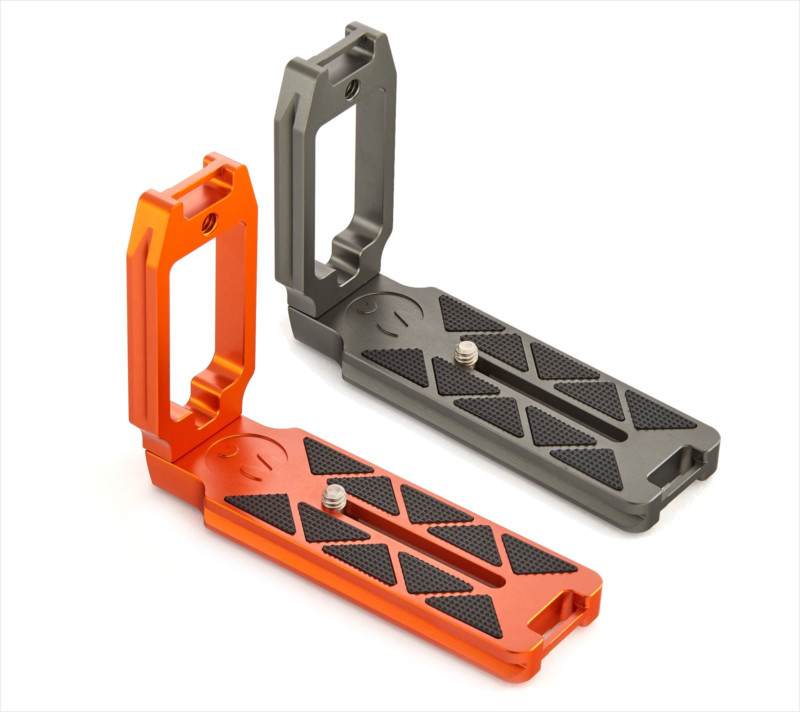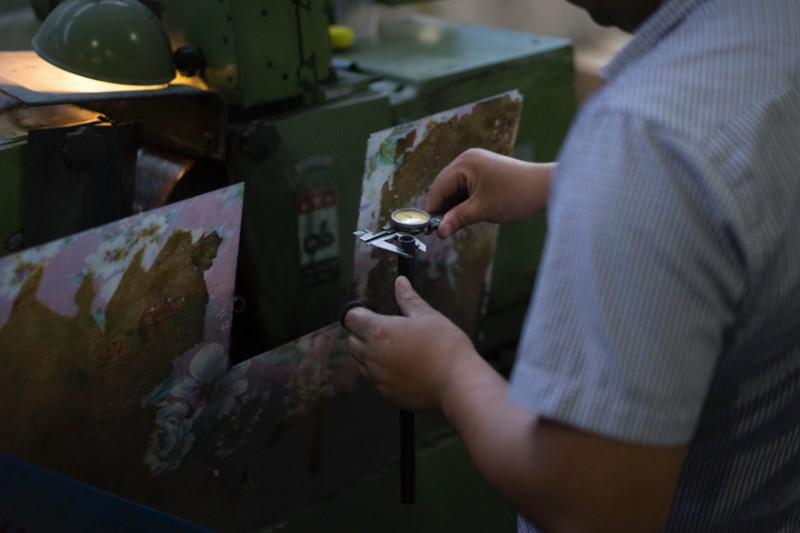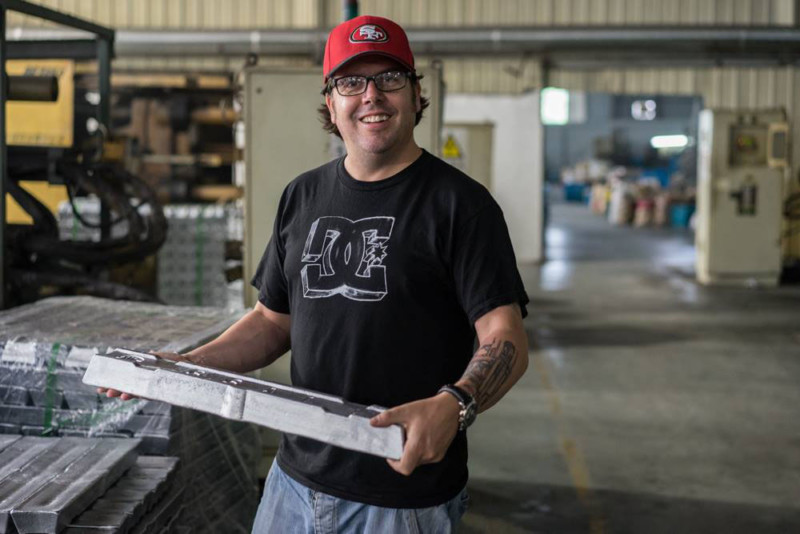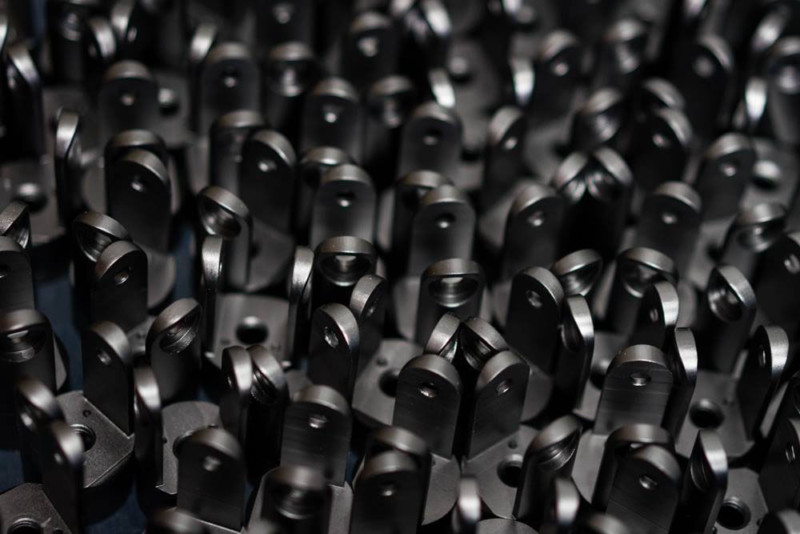Why Camera Gear Costs What It Costs
![]()
In the last couple of weeks, my little brand, 3 Legged Thing, launched a brand new Universal L Bracket, the QR11. For the most part, the response has been overwhelmingly positive.
Fantastic. What you actually did is perpetuate a cycle of intellectual property theft, and put your own equipment at risk by using something that has zero accountability, or any certification, made with unknown materials, in a factory where you have no idea what the conditions are like. That’s what you did.

I’ll take you through it, step by step, so you can understand.
1. Intellectual Property
Firstly, we (manufacturers) all trip up on intellectual property from time to time. When you file a patent, it takes the examiners upwards of a year to do all of the searches required to see if any prior art exists. As a small company, we simply don’t have the resources or the time to do this kind of search, and neither do most larger corporations, but we try our level best to ensure that we are only filing utility patents for true innovation. From time to time every company inadvertently steps on another’s toes, which is why we have a licensing system.
Chinese manufacturers have little or no regard for intellectual property. They are well known for copying other designs. They just buy the product, scan it, pull it into a CAD system, and then load it up to their machining. Voila — product copied.
Zero overhead, unless you count the cost of the product in the first place, plus the engineers time, reverse-engineering, and maybe two or three attempts for a production sample before it comes out correctly — or at least, how they perceive “correct”. The process probably takes a couple of weeks, if that.
So, basically it’s a counterfeit that took the hard work of a small company like mine, and without any consideration for the legalities (yes, it’s illegal) they copied it, stuck it in a box and sold it. But sure, you can have an L Bracket for six dollars.
2. Design & Deliver
This is just to demonstrate the work it takes to bring a single product, like our new L Bracket, to market.
- Design meeting. New product introduction. What are the objectives? What are we trying to achieve?
- Meetings with camera stores. Measure every camera. This takes a couple of weeks
- We make a box sketch for the underside, and left side aspects, taking in to account every camera we’ve measured.
- With all of the data in place I create a simplistic design which offers the most universal coverage for all cameras. Is it perfect? No. But that’s not the point – the point is a one-size-fits-all bracket, which may have some limitations, but serves to do the job it was designed for – to enable a photographer to switch from landscape to portrait without moving the tripod or head, retaining the composition.
- Then I start to design the mechanical necessities – usually I start with the rubber pads. This process can take a long time. The rubber pads are crucial to the final product. My goal is to create maximum surface contact and grip, to provide a stronger, more secure connection.
- Innovation comes next — what other value can we add to this product? We add a number of extra functions to all of our products. This part of the process can take several weeks.
- Once we have a final design, there are a number of stages. Filing patents or design registrations comes first – over the life cycle of a patent it will cost upwards of $100k for extending worldwide, annual renewals, legal costs, filing fees etc.
- Making a short run production for samples is next, and handing these out to a number of Pro-Team members to test and try and comment on.
- Build the asset library. The costs and time implications of this should not be underestimated.
- Photograph the products – pack shots
- Lifestyle Images – shots in use, in different locations and environments
- Product Video
- Product Information Packs for dealers
- Packaging design and Instructions actually happens towards the end of the process. This can take a few months itself, as there are a number of things to consider — we write manuals in six languages, and our boxes and packaging have to comply with regulations in 206 countries – no easy feat.
- Finally it’s the launch. Press releases, marketing, adding listings and writing copy for websites, blurb etc.
That whole process just took between 8 and 12 months, with thousands of man hours, and costs upwards of $100k in time, materials, legal fees, outsource costs etc.
The bottom line is, the Chinese factory did it in two weeks, without any of the above effort. Is it any wonder they can produce something that looks similar for six dollars?
3. Factory Standards
Working conditions is an important part of our company ethos, as it is for most manufacturers in our industry. Sure, I could make things cheaper — the first factory I worked with, with one of my other brands back in 2005, was a total chop shop — I pulled out of there when I realized how bad the conditions were. That was a steep learning curve for me.
Since then, I inspect any factory for compliance to health and safety regulations before deciding whether or not to trial them, and I always, always stay at the factory for first production, to see that workers are treated fairly, provided with the necessary tools and safety equipment required to do their jobs properly.

I’ve seen factories where the conditions are appalling. Where old ladies sit with woolen gloves, using their hands to knock burrs off die-cast components, blood pouring up their arms. Where molds that weigh over 600kg (1,300+ pounds) are carted around on rusty chains by workers with no safety helmets, wearing sandals or flip flops. Where workers using lathes or DMCs sit with sparks flying at them, no goggles on, hands covered in splinters.
It’s inhumane. And for us, unacceptable. But sure, you can have an L Bracket for six dollars.
4. Materials
We use only the highest grade of materials. We use T6061 for aluminium with a 1.1% magnesium content. We use the highest grade of stainless steel for the safety pins and the camera screw. We’ve tested these to destruction, because we know that a 4mm shaft of stainless steel is the difference between holding your camera and losing it. Is the cheap, Chinese version free from materials that are restricted in most countries? Lead, cadmium, and a few others besides?

Then there are the actual processes to consider. I saw one comment along the lines of “got one from AliExpress, CNC’d, so every bit as good as a brand version”. That’s just not accurate. A CNC machine is just a 3D drill that does what it is mapped to do.
There are all sorts of other considerations: which kind of lubricant do they use? Is it toxic? Do they have sealed waste flushing and specialist disposal? What about the tolerances? Is it precision engineered? Unlikely. Being that the aim of the game is to be as cheap as is humanly possible, I doubt that any single item sits in a block for more than five minutes, meaning it’s machined crudely and cheaply. It’s also the difference between using a $2 drill bit and a $100 drill bit. Both will make a hole, but only one will do it smoothly and accurately.
How is it finished? Is it anodized? Anodizing is a horrible chemical process that requires strict controls and safety equipment, and extensive training. Even the Chinese government have started to close many of the non-compliant factories, because of the injury and fatality rates, and the dumping of chemicals into groundwater.

So, the materials are unknown, potentially full of non-compliant chemicals, made in a factory that’s possibly poisoning the groundwater of the local community, and might be responsible for many workplace injuries, but sure, you can have an L Bracket for six dollars.
5. Pricing
With months of development, huge legal costs for protecting designs and technology, thousands of man hours of labor, outsource costs, prototyping etc, this product has to make money. Contrary to popular belief, “profit” isn’t a dirty word. It enables everyone in the world who works in the private sector to have a job.
I have distributors in countries around the world. I need to sell the product to them, with a layer of profitability for my company. They need to sell it to camera stores, and also need to make a profit. The camera stores sell it directly to you, and they too need to make a profit, and it is this last link in the chain which is so at risk of extinction.
Our industry has millions of employees around the world. We’ve already seen huge losses of jobs and stores since 2010, and we’re only just seeing small signs of recovery. A huge proportion of camera sales happen in stores, not online, and it is this facet that is most critical.
The more stores that close, because they simply cannot compete with Chinese rip offs and off-the-shelf rebranded products, the less innovation will occur, and less production will happen, leading to higher prices and less jobs, until the economic viability of our industry is no longer sustainable.
The Reality
That is what you’re buying into when you decide to get it cheaply. Far be it for me to judge anyone for their decisions — that’s not what this is about. This is about the disposable, throw-away comments that largely circumnavigate the actual circumstances of a product’s arrival in the market place.
Have you ever heard the expression, “You get what you pay for”? Well, you do, if you buy something, anything, off the shelf in China, without any sort of verification process.
Anyway, I’m sure that any number of keyboard warriors will have something to say about this article. I’m not here to condemn anyone for their actions, far from it, I’m just trying to educate people to the realities of Chinese copies.
There are only really a dozen or so global brands involved in camera support technology. As the smallest of these we are, perhaps, less affected by the Chinese copies, so I’m not writing this to protect my own company. This is about all of the great manufacturers, past and present, who spend millions on product development every year, only to see themselves ripped off by unscrupulous factories who don’t have the vision, the skill or the tenacity to create anything themselves. This is for the tens of thousands of employees of those companies who work hard, in daily fear of their livelihoods thanks to the incursion of illegal copies into our market place.
Every time a cheap copy is purchased, pressure mounts on manufacturers to produce goods for less money, and make them more widely appealing and competitive. Product quality slips as the price goes down. Then the copies start coming down in price, until it gets to the point when stores don’t want to stock it any more, because they can no longer sell it competitively, and manufacturers don’t want to make it anymore, because it’s no longer economically or commercially viable.
Then, investment into innovation stops, and as new cameras are developed, there’s nobody around to make supporting accessories, because nobody wants to sink $100k of investment into a product that’ll be ripped off in 5 minutes. Once that happens, it’s all over. The industry gets smaller, less jobs, less profit and less products. It should be obvious to see what happens next. And it’s not just about photography. This is happening everywhere.
Are we perfect? No. But at least we’re doing it ourselves, with integrity, with compassion, with respect for human rights, with regard for regulations and compliance, with one eye on our planet and recycling, and with a degree of passion for this great industry.
That’s why it costs $50.
About the author: Danny Lenihan is the founder and CEO of 3 Legged Thing. The opinions expressed in this article are solely those of the author. Prior to his career in entrepreneurship, Lenihan was also a comedian, actor, and musician. You can connect with him on his website, Twitter, and Facebook. This article was also published here.
Image credits: Header illustration based on photo by NeONBRAND on Unsplash